
I was making my morning inspection of my garden, coffee in hand when I noticed something on my spinach that made my heart skip a beat.
There, on one of the leaves, I noticed an odd yellow trail that spread into a splotch. And then I noticed the same trails on another leaf, and another and another. These yellow trails were soft spots that spread across the leaf.
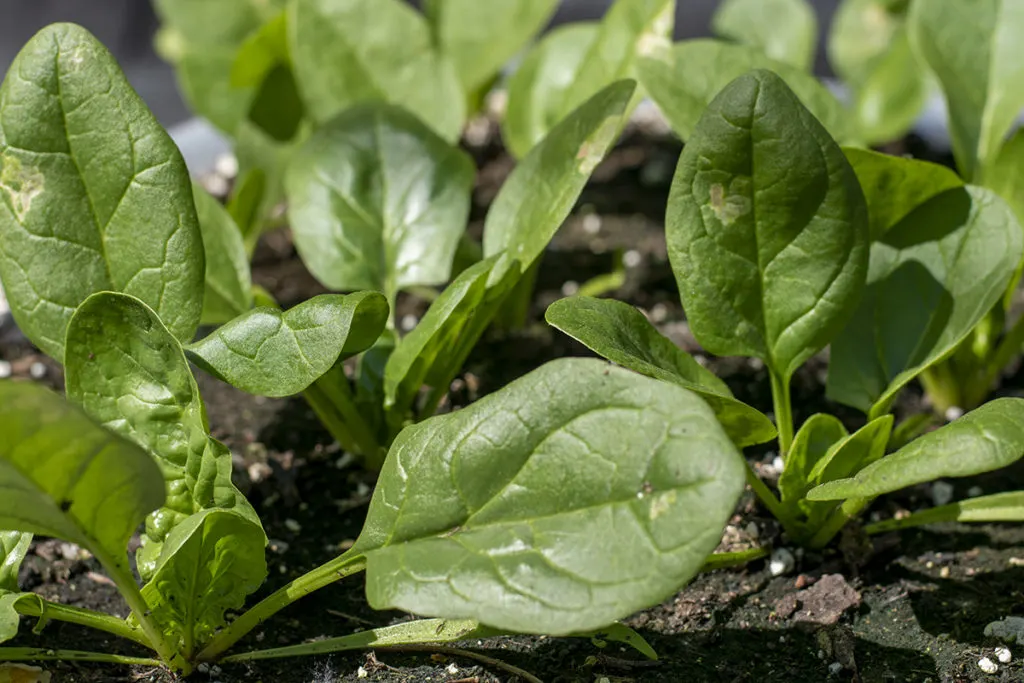
After such a great start to the gardening season, I realized my entire container of spinach was host to one of the most annoying garden pests known to man.
Leaf miners.
Ugh.
Give me aphids or hornworms, even blossom end rot, but not leaf miners.
When it comes to garden pests, none are as annoying (or deceptively clever) as the group of insects known as leaf miners.
But don’t worry, I’ve got you covered. By the end of this article, you’ll be armed and ready to take on these chewing, chomping leaf-destroying pests. I’ll go over everything you need to know about leaf miners:
- What are leaf miners
- How to identify them
- What plants they prefer
- How to spot their tell-tale damage
- Your eradication options
- And, of course, how to prevent another infestation
When it comes to gardening pests, leaf miners are one of the trickiest to deal with. It’s not impossible to get rid of them, but it takes time and persistence. And, I’ll be honest with you, a little luck.
Leaf miners are one pest if caught early on, you can be rid of them before they become a nuisance.
And the good news is that depending on the crop, they may not be a big problem beyond unsightly leaves.
However, if your crop is mainly an edible leaf, such as spinach, chard or lettuce, they can spell serious trouble.
What are Leaf Miners?
Hungry, that’s what they are.
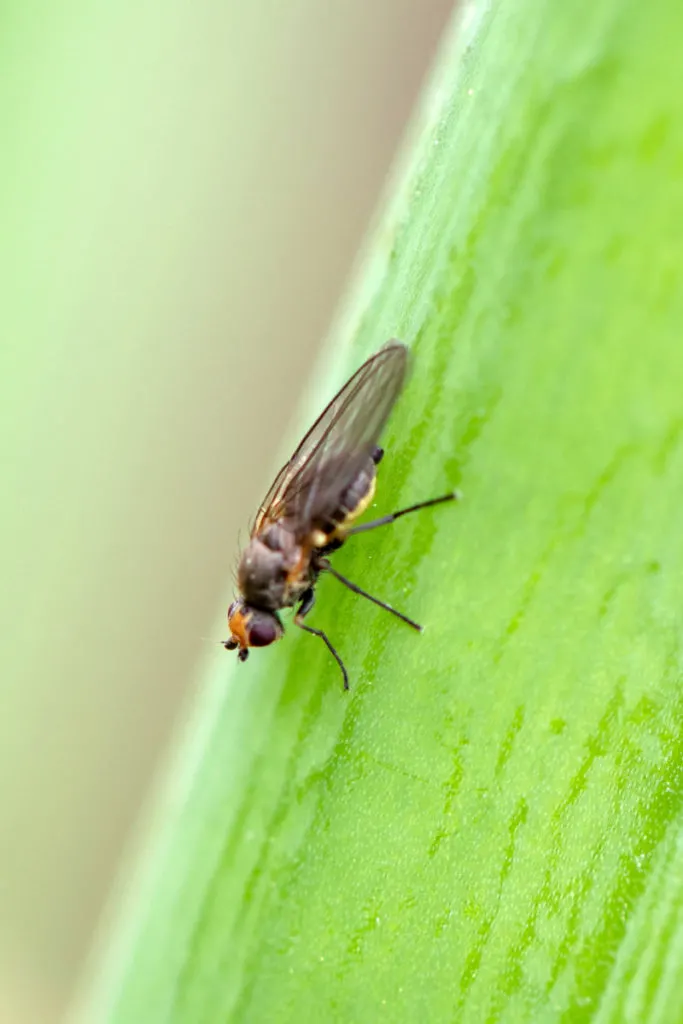
The term leaf miner describes a variety of insect with species numbering in the hundreds. Lepidoptera, Gracillariidae, and Tenthredinidae, to name a few.
They’re usually a tiny moth or fly and can be found all across the globe. No matter where you are (unless you’re gardening in Antarctica), there’s a leaf miner just waiting to munch on your leafy plants.
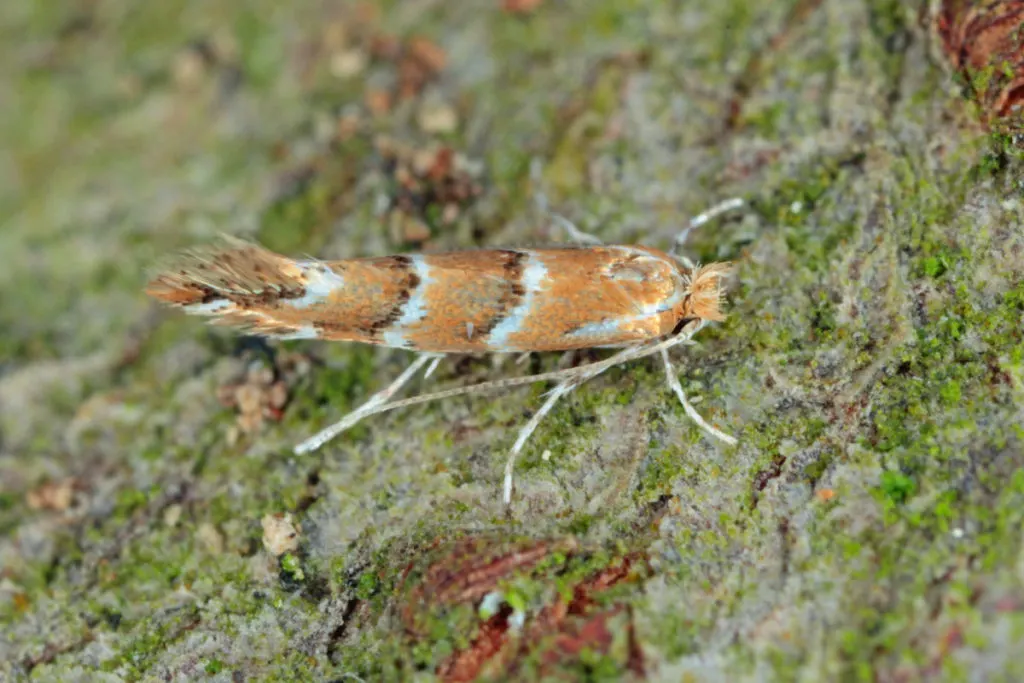
Leaf miners come by their name because of the genius way the larvae are protected.
The female of the species lays eggs on the underside of leaves, or in some cases, injects eggs into the fleshy part of a leaf.
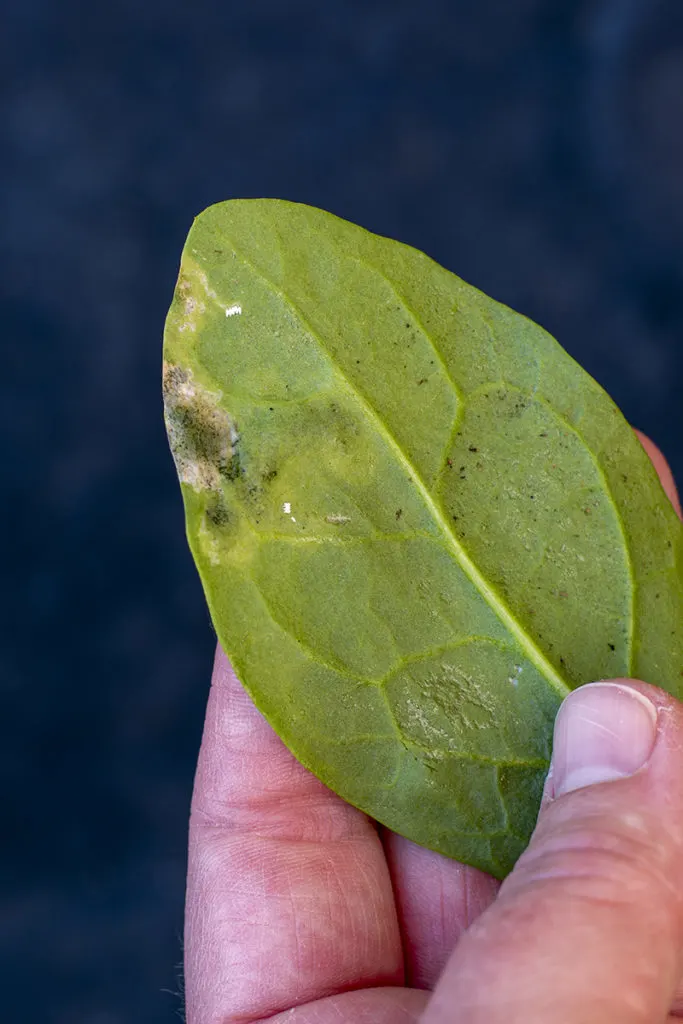
Once the leaf miner larvae hatch, they eat their way into the leaves, nesting inside them. Their munching causes the unsightly tunnels we see on the outside of the leaf. The larvae get a free meal while being protected from predators that would happily eat them up.
Once they reach maturity, the larva drops out of the leaves into the ground, where they pupate before emerging as the adult moth or fly. Some species will even winter over in the soil.
This brilliant defense mechanism is what makes the leaf miner so hard to get rid of. But we’ll get to that later.
How to Identify Leaf Miner Damage
Because of how many species of leaf miners there are, it’s easier to identify their handiwork rather than identify the bugs themselves.
As I mentioned at the start, leaf miner damage is pretty easy to recognize. You’ll notice strange, squiggly paths that are pale yellow to light brown or rust-colored on the leaves of your plants. Sometimes these spread as the leaf rots, and it becomes more of a patch than a path.
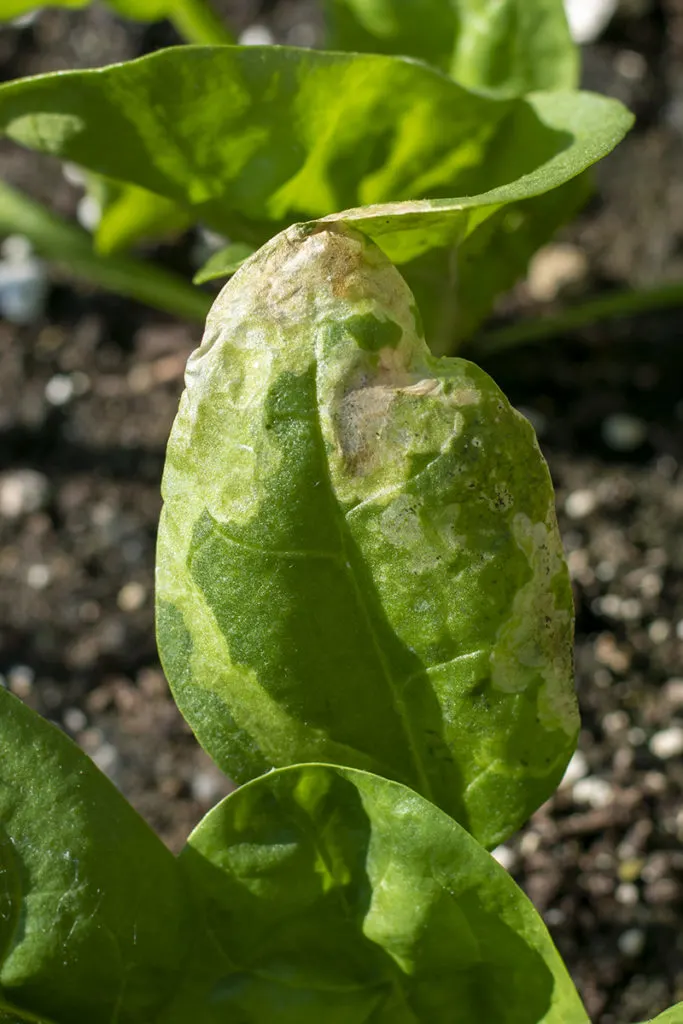
If the damage is severe enough, the leaf may even become translucent.
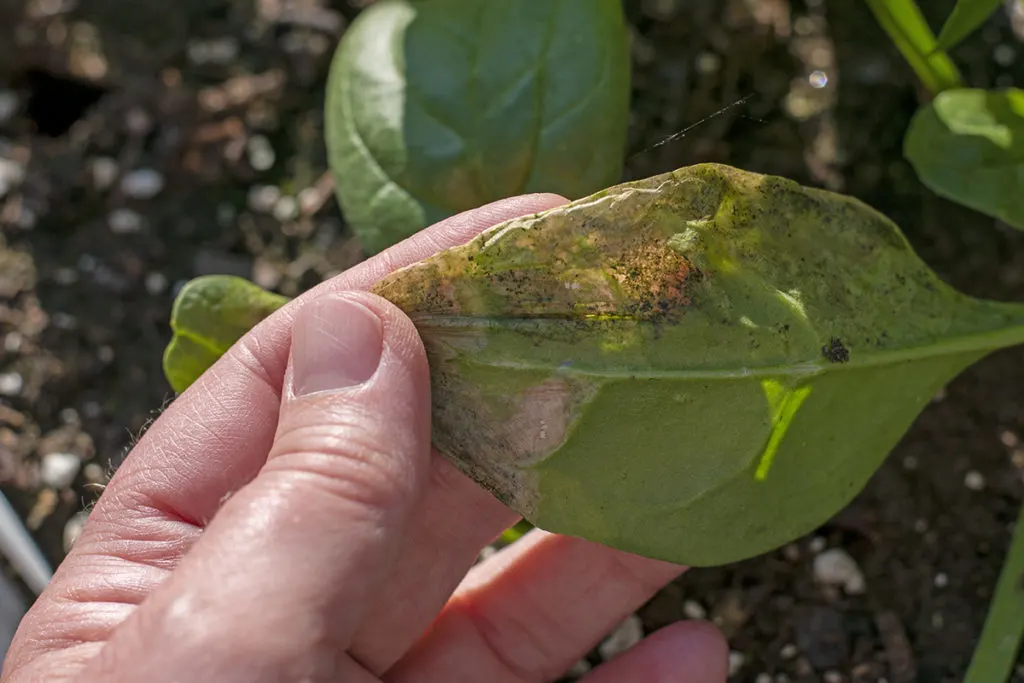
If you hold an infested leaf up to the light, you can see the little buggers (that’s the politest word I could come up with) safely protected inside the leaf, tucked away from any outside treatment you may employ to be rid of them.
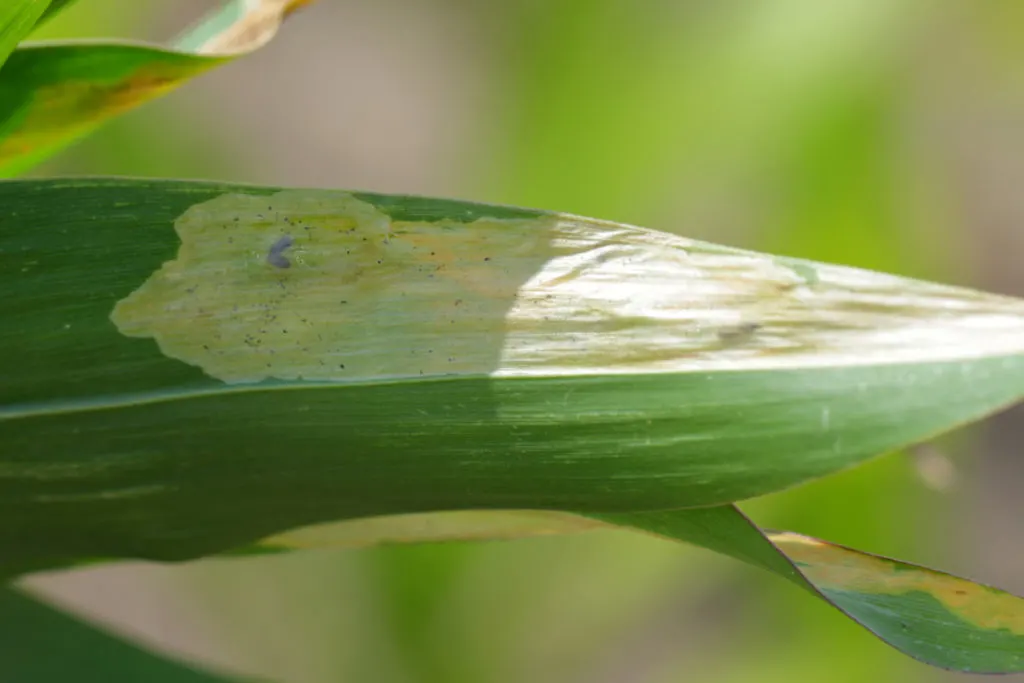
What Plants are Susceptible to Leaf Miners
While some leaf miners specialize, like spinach leaf miners and citrus leaf miners, many species will happily lay their larvae in whatever leaves are at hand.
The most commonly susceptible plants to leaf miner damage are:
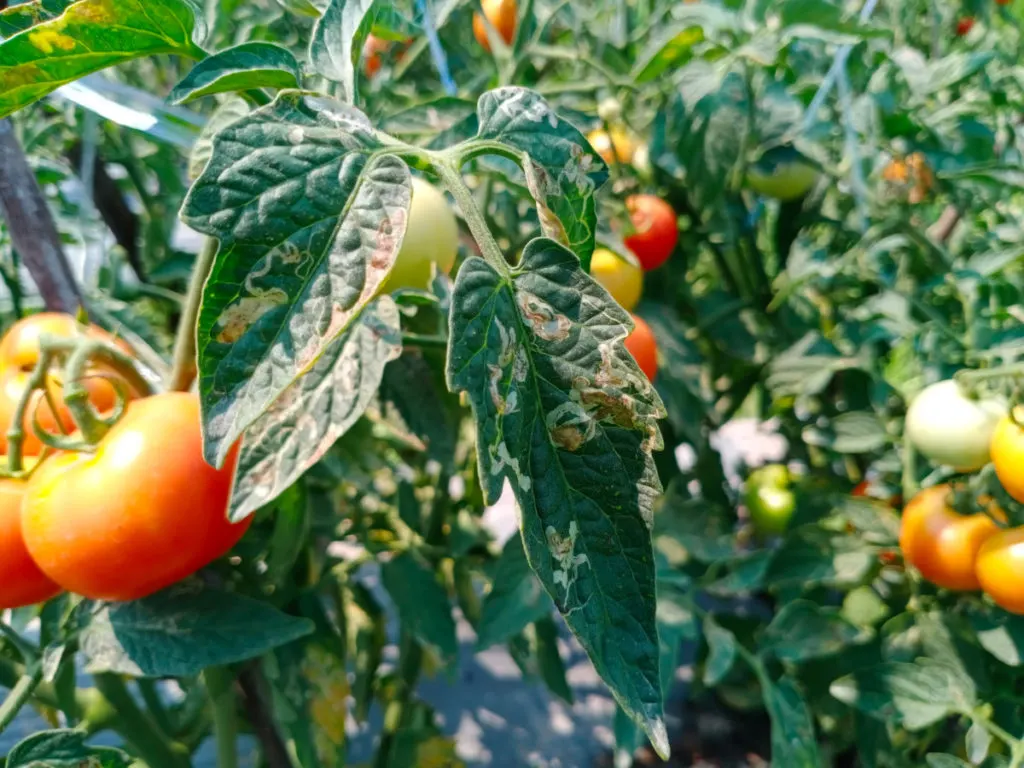
- Cole crops – basically any leafy vegetable that does well in cool weather, especially Brassicas; broccoli, Brussels sprouts, spinach, etc.
- Cucurbits such as squash, melons, pumpkins and cucumbers
- Tomatoes
- Peas
- Beans
- Many flower species, anything with broad leaves
- Many tree species
I know, that’s quite a list. But the good news is that leaf miners aren’t a big concern for the fruits or blossoms of these plants, only the leaves. For instance, if you get leaf miners in your pumpkin leaves, you’ll still have nice pumpkins.
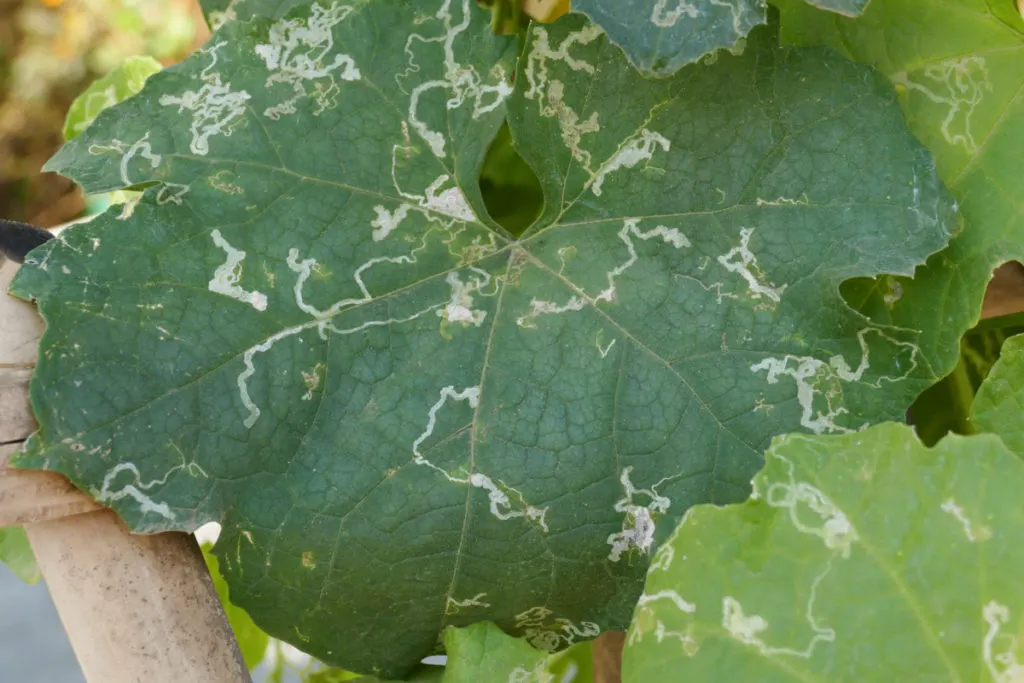
The biggest concern with leaf miners for these plants is that the damage to the leaves can open up the plant to bacteria and other types of diseases. However, if the plant is mature, leaf miner damage shouldn’t be too big of a concern for you. Most plants will do just fine despite the larvae eating the leaves.
Of course, if you’re growing a crop specifically to eat its leaves (my poor, poor spinach), then it’s a different story. In that case, leaf miners are a real pain in the…salad bowl.
But there is still hope. On to the part you’re actually here for – how to get rid of them!
How to Ged Rid of Leaf Miners
The best way to get rid of leaf miners is to catch them as early as possible. The only way to do this is to make daily inspections. One of the first things I do each day during the growing season is to check my garden.
If you catch leaf miner damage when it’s only on a few leaves, eradicating them is simple – squish them.
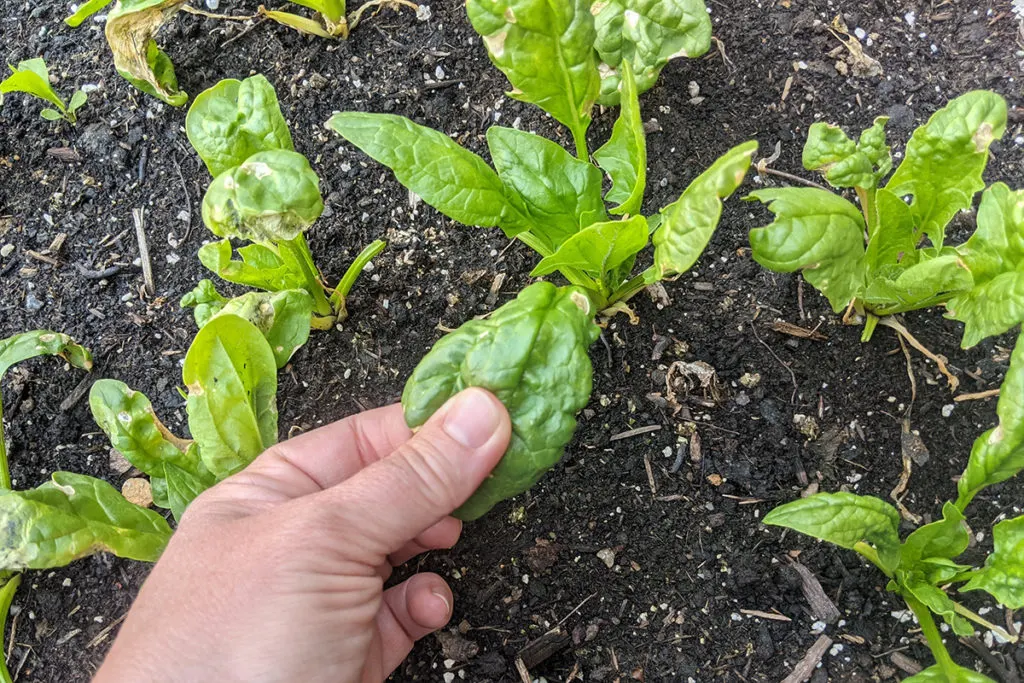
Yup, kind of gross, I know, but it’s effective.
When you find that tell-tale path on a leaf, squeeze along the entire length of the path with your fingers firmly. You’ll crush the larva hiding inside the leaf. Be thorough and make sure you crush the whole area that’s been damaged. Look around for other leaves and do the same.
For the squeamish reader, you can also cut off the affected leaves and throw them away. Don’t compost them, or you’ll end up with more leaf miners.
Catching the leaf miners in this early stage of development before they take over is the easiest way to deal with them.
Sometimes though, we don’t see the damage until it’s too late. (Still pouting about my spinach.)
If you’re way past the point of squishing a few leaves, you have options. Neem oil is your best organic option for killing leaf miners; however, it’s a bit of a process because of their clever way of hiding.
Cut a leaf or two from the infested plant and place it in a Ziploc baggie. Check the bag daily, and once you see the larvae hatch grab your neem oil and start spraying the affected plants in your garden. Be sure you soak the underside of the leaves too. You want the plants dripping wet. For the treatment to be effective, you have to spray daily for seven to ten days.
Bacillus Thuringiensis or BT is also effective against leaf miners. The trick again is the larva has to come into contact with the bacteria. I would suggest using it along with the neem oil. Consider using a BT powder on the soil for any larva that drops from the leaves.
How to Prevent a Reinfestation
If you want to be sure there’s no coming back next year for these pests, consider adding beneficial nematodes to your soil, which will feast on the larva hiding out until next winter.
You may also want to employ floating row covers right from the beginning of the season. These are a great way to keep flying pests in general from reaching your precious plants.
Despite your best efforts, sometimes the best thing you can do is yank up your crop and start over. I ended up deciding to do this with my spinach plants.
My garden is all in containers, so it was easy for me to remove the infected plants. I also decided to pitch the old potting soil and start new to ensure I wasn’t just planting more spinach for another generation of leaf miners.
Leaf miners can be a real pain to deal with, but finding them blazing trails through your greenery isn’t the end of the world. With a little patience, you can get your greens back on track.

Get the famous Rural Sprout newsletter delivered to your inbox.
Including Sunday musings from our editor, Tracey, as well as “What’s Up Wednesday” our roundup of what’s in season and new article updates and alerts.

